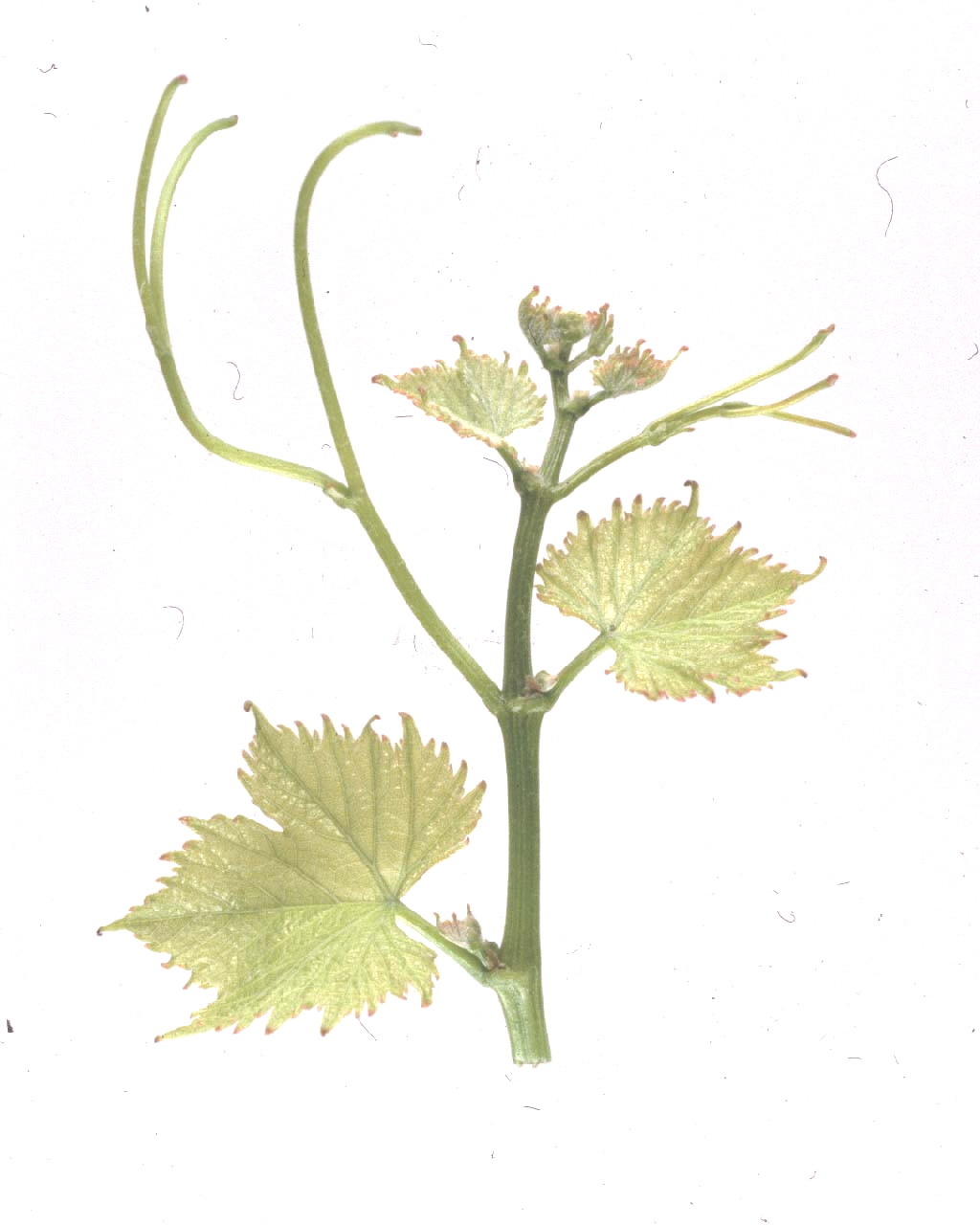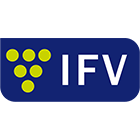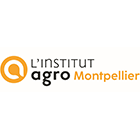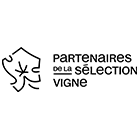Grenache
N
Wine grape variety.
The geographical origin of the variety is specified or, if this is not possible, the area in which it is traditionally cultivated. The genetic origin of the variety is also indicated whenever it is known from hybridiser data or from genetic analyses published or obtained by the teams at INRAE in Montpellier (UMR AGAP) and Vassal-Montpellier Grapevine Biological Resources Centre (CRB-Vigne).
This variety was originally from Spain and was introduced to France in the Middle Ages.
This information indicates the normal and statutory use for the grapes.
Wine grape variety.
Name under which the variety is officially registered in the catalogue of grapevine varieties in France and under which it may be propagated and disseminated.
Grenache
Recognised alternative names that may be used to identify the propagation material of the variety in France or in other member countries of the European Union.
In the European Union, Grenache is officially called by other names: Alicante (Italy), Cannonau (Italy), Tocai rosso (Italy), Garnacha Tinta (Spain), Grenache noir (Bulgaria, Cyprus, Croatia) and Grenache rouge (Greece). These synonyms are officially recognized in France regarding plant propagation material.
This information indicates on which list the variety is registered (A or B), whether it is classified for wine grapes, and in which member countries of the European Union the variety is also officially registered (for more information, see the "Legislation" menu.
In France, Grenache is officially listed in the "Catalogue of vine varieties" on the A list and classified. This variety is also listed in the catalogues of other Member States of the European Union: Austria, Bulgaria, Croatia, Cyprus, Greece, Italy, Malta, Portugal and Spain.
Evolution of cultivated areas in France
The figures provided are taken from vineyard land registers (IVCC, ONIVIT, ONIVINS), general agricultural censuses (SCEES-INSEE) and the current computerised vineyard register (DGDDI, FAM).
Regional vine planting data is available on the following site: https://visionet.franceagrimer.fr/Pages/DonneesInteractivesDocs.aspx?sousmenu=observatoire%20de%20la%20viticulture.
The figures provided are taken from vineyard land registers (IVCC, ONIVIT, ONIVINS), general agricultural censuses (SCEES-INSEE) and the current computerised vineyard register (DGDDI, FAM). Regional vine planting data is available on the following site: https://visionet.franceagrimer.fr/Pages/DonneesInteractivesDocs.aspx?sousmenu=observatoire%20de%20la%20viticulture.
Year |
ha |
|
|---|---|---|
|
1958 |
24886 |
|
|
1968 |
51931 |
|
|
1979 |
77669 |
|
|
1988 |
86715 |
|
|
1998 |
91619 |
|
|
2008 |
98644 |
|
|
2018 |
82966 |
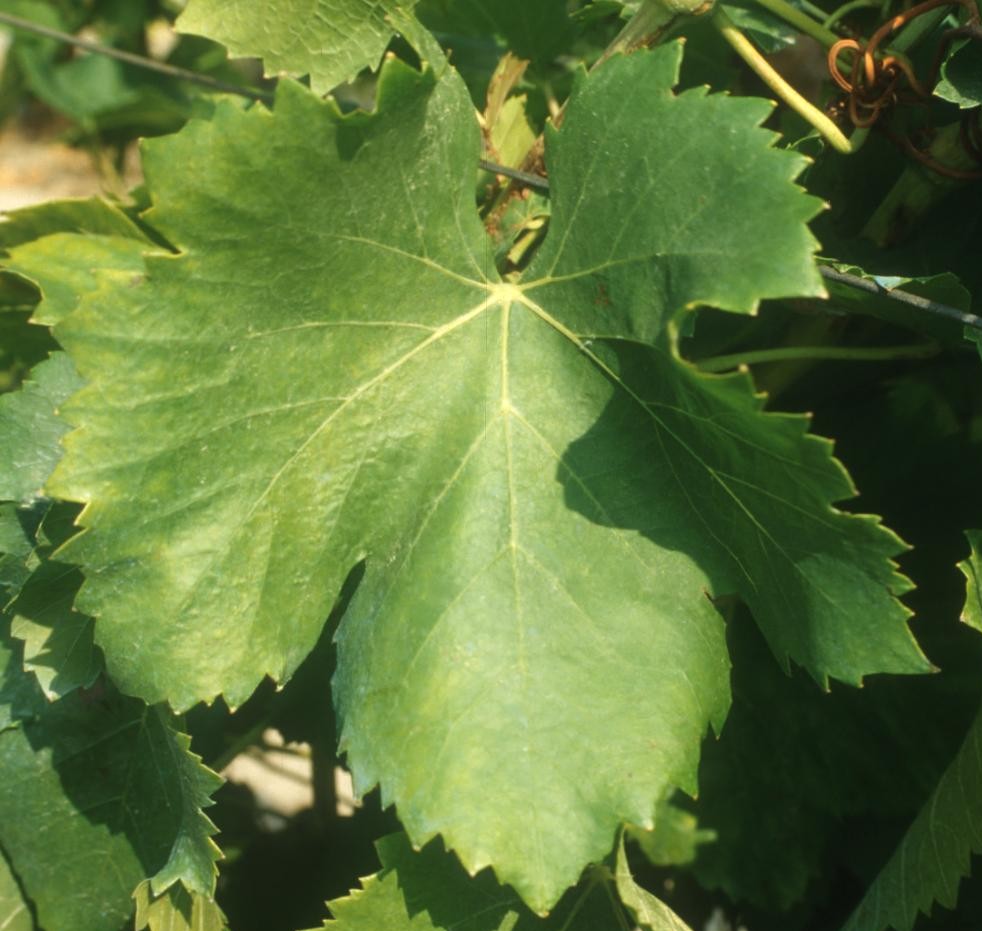
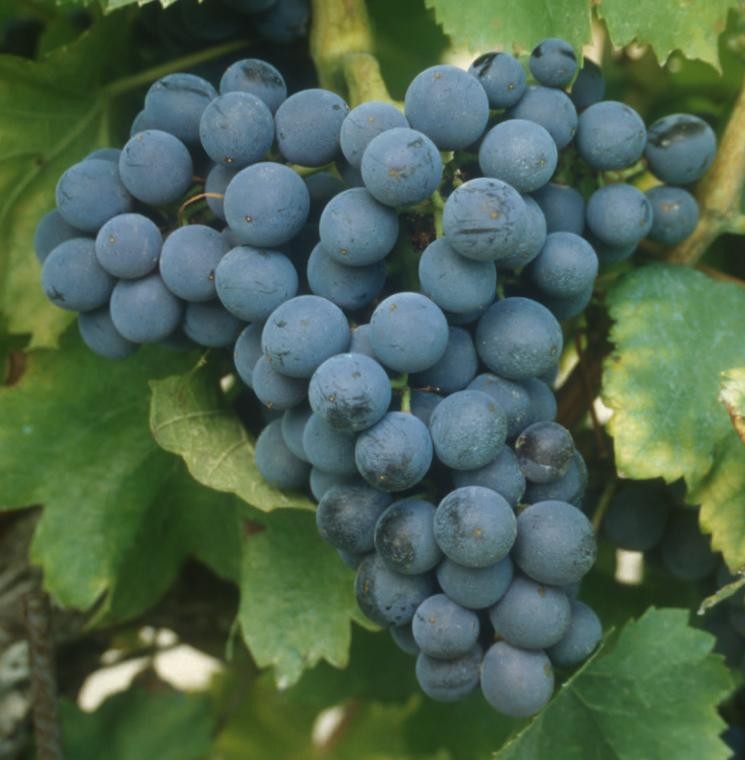
Only the principal ampelographic elements enabling the varieties to be characterised and identified are provided. They are presented according to the descriptor code recognised by the International Organisation of Vine and Wine (OIV), the International Union for the Protection of New Varieties of Plants (UPOV), the Community Plant Variety Office (OCVV) and Bioversity International (for more information, see the "Ampelographic glossary" menu). The photographs of leaves and grapes were taken in natural conditions, on the vine, in very similar situations in terms of growing conditions (sandy soil, Mediterranean coast): - Domaine de l'Espiguette (IFV), Le Grau du Roi (Gard), - Domaine de Vassal (INRAE), Marseillan (Hérault), - La Gaillarde Campus (Institut Agro | Montpellier SupAgro), Montpellier (Hérault). Only a few photographs, including the tips of bunches, were taken in other conditions.
- the tip of the young shoot with a low density of prostrate hairs,
- the green and shiny young leaves,
- the shoots with green internodes,
- the adult leaves with teeth with straight sides, no anthocyanin coloration of veins and petioles, a very twisted smooth leaf blade, and on the lower side of the leaves, no or a very low density of erect and prostrate hairs,
- the yellow woody shoots,
- the round-shaped berries.
Genetic profile
The genetic profile of the variety is provided for the 9 microsatellite markers (or SSR markers) selected under the European programme GrapeGen06 (http://www.eu-vitis.de/index.php) and by the OIV. The absolute size values of the alleles may vary slightly from one laboratory to another, but the relative differences between the two alleles of one single microsatellite are constant. The genetic analyses were conducted by the INRAE Montpellier team (UMR AGAP) and the IFV’s Plant Material Centre.
| Microsatellite | VVS2 | VVMD5 | VVMD7 | VVMD27 | VRZAG62 | VRZAG79 | VVMD25 | VVMD28 | VVMD32 |
|---|---|---|---|---|---|---|---|---|---|
|
Allele 1 |
135 |
223 |
239 |
191 |
188 |
258 |
240 |
243 |
239 |
|
Allele 2 |
143 |
238 |
243 |
191 |
188 |
258 |
254 |
243 |
249 |
The data on suitability are the result of field observations or, if none are available, of bibliography mining and the study of bibliographic references.
This variety is very vigorous (strong vine trunks), is sometimes sensitive to coulure and can have issues with lignification. Grenache has an erect bearing and must be pruned short in gobelet or cordon. It easily shows symptoms of magnesium deficiency. It is better adapted to slightly acidic, gravel or stony (pebble) terroirs rather than to very limestone white soil.
These remarks are also the result of field observations or, if none are available, of bibliography mining and study of bibliographic references.
This variety is very sensitive to downy mildew and phomopsis and is rather sensitive to bacterial necrosis, grey rot and vine moths. On the other hand, it is not very susceptible to mites and resists well against, ungrafted, Meloidogyne arenaria nematodes in the sands along the coast.
The growth stages indicated are the result of obsrvations made at the Domaine de Vassal Estate where the set of these varieties form a collection. The results are indicated compared to the Chasselas vine variety as a reference in order to make comparisons between years and different sites. As such, for information purposes, the dates for the Chasselas B growth stage at Domaine de Vassal are as follows: - Bud burst, 21 March (average over 50 years) - Grape maturity, 14 August (average over 50 years)
Bud burst: 6 days after Chasselas.
Grape maturity: late-season, 4 weeks after Chasselas.
The size of grape clusters and berries indicated are based on the following scales: - Wine grape varieties Size : Very small Bunch (g) : ≤ 100 Berry (g) : 1 - Table grape varieties Bunch (g) : 150 Berry (g) : 2 - Wine grape varieties Size : Small Bunch (g) : 100 - 200 Berry (g) : 1,5 - 2 - Table grape varieties Bunch (g) : 150 - 250 Berry (g) : 2 - 3,5 - Wine grape varieties Size : Moderate Bunch (g) : 200 - 250 Berry (g) : 2 - 2,5 - Table grape varieties Bunch (g) : 250 - 400 Berry (g) : 3,5 - 5,5 - Wine grape varieties Size : Large Bunch (g) : 250 - 400 Berry (g) : 2,5 - 3,5 - Table grape varieties Bunch (g) : 400 - 700 Berry (g) : 5,5 - 8 - Wine grape varieties Size : Very large Bunch (g) : 400 Berry (g) : 3,5 - Table grape varieties Bunch (g) : 700 Berry (g) : 8 Remarks concerning the characteristics of the wines are generally based on tastings organised by juries of professionals.
Grenache's bunches are medium to large and the berries are medium in size. It has a very high sugar accumulation potential but the color decreases quickly as the yields increase. Acidity is generally low. Grenache produces sweet wines and very structured, ample and aromatic great wines suited to ageing, provided that they are planted in quality terroirs and that the yields are perfectly managed.
In this section, the list of certified clones is given. Information on clone conservatories is also provided.
The twenty-four Grenache clones carry the numbers 70, 134, 135, 136, 137, 224, 287, 362, 432, 433, 434, 435, 513, 514, 515, 516, 517, 814, 1064, 1065, 1212, 1270, 1271 and 1272. A conservatory of more than 360 clones was planted in the Côtes du Rhône in 1998.
Bibliography
- Catalogue des variétés et clones de vigne cultivés en France. Collectif, 2007, Ed. IFV, Le Grau-du-Roi, France.
- Documentary collections of the Centre de Ressources Biologiques de la Vigne de Vassal-Montpellier, INRAE - Institut Agro | Montpellier, Marseillan, France.
- Dictionnaire encyclopédique des cépages et de leurs synonymes. P. Galet, 2015, Ed. Libre&Solidaire, France.
- Traité général de viticulture, Ampélographie. P. Viala and V. Vermorel, 1901-1909, Ed. Masson, Paris, France.
Description of clones approved in France
In this section, the list of certified clones is given. Information on clone conservatories is also provided.
In this section, the list of certified clones is given. Information on clone conservatories is also provided.
-
Clone number
-
Brand
-
Origin
Region, department or winegrowing region in which the “clone mother plant” was identified and selected.
-
Selection
Body or bodies which selected the clone. In France, clonal selection is the responsibility of the selection organisations (themselves accredited by the ministry in charge of agriculture), usually in close collaboration with a technical partner working in a winegrowing region. For clones certified after 1999, the name of the partner or partners who took part in the selection work is also included. (NB: CA = Chamber of Agriculture).
-
Year of approval
Year in which the clone was certified by the FranceAgriMer board further to a proposal by the Vine section of the CTPS (Permanent Technical Committee for Plant Selection).
-
Agronomic Reference
Region, department or winegrowing region in which the agronomic and technological data were collected.
-
Surface in multiplication
Surface area in hectares (ha) of stock nurseries used for propagation for the year under consideration (in brackets), which allows the available potential to be evaluated. Clones with a surface area of between 0.01 and 0.10 ha are shown as <0.10 ha. Clones of limited dissemination, but for which we have technical data, are shown as <0.01 ha. Other clones are given as “low-dissemination clone”, which means that the clone has been certified only recently or has not been propagated. In both cases, only the initial material is planted in the selection centres.
-
 N
N -
70
-

-
Vaucluse
-
ENTAV
-
1971
-
Languedoc-Roussillon;
Rhône-Valley -
30.60 ha
-
Agronomic Data
-
Fertility medium to high
-
Production level high
-
Cluster weight medium to high
-
Berry size medium
-
Technological Data
-
Sugar richness medium to high
-
Color potential medium
-
Total acidity medium
-
Tannic structure low to medium
-
Oenological skills representative wines of the variety that sometimes lack structure
-
Other information
-
General note productive clone, regular in sugar and polyphenol richness if production is managed
-
 N
N -
134
-

-
Aude
-
INRA
-
1972
-
Languedoc-Roussillon;
Rhône-Valley -
6.94 ha
-
Agronomic Data
-
Fertility high
-
Production level high
-
Cluster weight medium to high
-
Vigor high
-
Berry size medium
-
Technological Data
-
Sugar richness low
-
Color potential low to medium
-
Tannic structure low to medium
-
Oenological skills wines often lack structure and color
-
Other information
-
General note very productive clone
-
 N
N -
135
-

-
Aude
-
INRA
-
1972
-
Languedoc-Roussillon;
Rhône-Valley -
12.59 ha
-
Agronomic Data
-
Fertility low to medium
-
Production level medium
-
Cluster weight medium
-
Vigor low
-
Berry size medium
-
Technological Data
-
Sugar richness medium to high
-
Color potential medium to high
-
Tannic structure medium to high
-
Oenological skills colored and structured wines
-
Other information
-
General note clone appreciated for its agronomic characteristics and the quality of the wines obtained
-
 N
N -
136
-

-
Aude
-
INRA
-
1972
-
Languedoc-Roussillon;
Rhône-Valley -
22.85 ha
-
Agronomic Data
-
Fertility medium to high
-
Production level low to medium
-
Cluster weight low to medium
-
Vigor low
-
Berry size low to medium
-
Technological Data
-
Sugar richness high
-
Color potential medium to high
-
Tannic structure medium to high
-
Oenological skills balanced, colored and well-structured wines
-
Other information
-
General note clone appreciated for its agronomic characteristics and the quality of the wines obtained
-
 N
N -
137
-

-
Aude
-
INRA
-
1972
-
Languedoc-Roussillon;
Rhône-Valley -
2.10 ha
-
Agronomic Data
-
Fertility low to medium
-
Production level medium
-
Cluster weight medium
-
Berry size medium
-
Technological Data
-
Sugar richness low
-
Color potential low to medium
-
Tannic structure low to medium
-
Oenological skills wines sometimes lack concentration
-
 N
N -
224
-

-
Vaucluse
-
ENTAV
-
1973
-
Languedoc-Roussillon;
Rhône-Valley -
15.94 ha
-
Agronomic Data
-
Fertility medium
-
Production level high
-
Cluster weight high
-
Berry size medium
-
Technological Data
-
Sugar richness medium
-
Color potential low to medium
-
Tannic structure medium
-
Oenological skills representative wines of the variety that sometimes lack structure
-
Other information
-
General note very productive clone
-
 N
N -
287
-

-
Vaucluse
-
ENTAV
-
1973
-
Languedoc-Roussillon;
Rhône-Valley -
3.12 ha
-
Agronomic Data
-
Fertility medium to high
-
Production level high
-
Cluster weight medium to high
-
Berry size medium
-
Technological Data
-
Sugar richness low to medium
-
Color potential low to medium
-
Tannic structure medium
-
Oenological skills representative wines of the variety
-
 N
N -
362
-

-
Vaucluse
-
ENTAV
-
1975
-
Languedoc-Roussillon;
Rhône-Valley -
18.33 ha
-
Agronomic Data
-
Fertility low to medium
-
Production level low
-
Cluster weight low
-
Berry size low
-
Technological Data
-
Sugar richness high
-
Color potential medium to high
-
Tannic structure medium to high
-
Oenological skills balanced, colored and well-structured wines
-
Other information
-
General note less compact bunches. Clone appreciated for its agronomic characteristics and the quality of the wines obtained. Tend to be more susceptible to coulure in years that favour this phenomenon.
-
 N
N -
432
-

-
Vaucluse
-
ENTAV
-
1976
-
Languedoc-Roussillon;
Rhône-Valley -
-
-
Agronomic Data
-
Fertility medium to high
-
Production level medium
-
Cluster weight medium
-
Vigor high
-
Technological Data
-
Sugar richness low to medium
-
Oenological skills representative wines of the variety
-
Other information
-
General note irregular behaviour according to the conditions of the vintage and the environment
-
 N
N -
433
-

-
Vaucluse
-
ENTAV
-
1976
-
Languedoc-Roussillon;
Rhône-Valley -
1.52 ha
-
Agronomic Data
-
Fertility medium to high
-
Production level medium
-
Cluster weight medium
-
Berry size medium
-
Technological Data
-
Sugar richness medium to high
-
Color potential medium to high
-
Tannic structure medium to high
-
Oenological skills representative wines of the variety
-
 N
N -
434
-

-
Vaucluse
-
ENTAV
-
1976
-
Languedoc-Roussillon;
Rhône-Valley -
3.87 ha
-
Agronomic Data
-
Fertility medium to high
-
Production level medium to high
-
Cluster weight medium
-
Vigor high
-
Berry size medium
-
Technological Data
-
Sugar richness medium to high
-
Color potential medium
-
Tannic structure medium to high
-
Oenological skills representative wines of the variety
-
 N
N -
435
-

-
Vaucluse
-
ENTAV
-
1976
-
Languedoc-Roussillon;
Rhône-Valley -
10.83 ha
-
Agronomic Data
-
Fertility medium to high
-
Production level low to medium
-
Cluster weight low to medium
-
Berry size low to medium
-
Technological Data
-
Sugar richness high
-
Color potential medium to high
-
Tannic structure medium to high
-
Oenological skills balanced, colored and well-structured wines
-
Other information
-
General note clone appreciated for its agronomic characteristics and the quality of the wines obtained
-
 N
N -
513
-

-
Non précisée
-
ENTAV
-
1976
-
Languedoc-Roussillon;
Rhône-Valley -
2.17 ha
-
Agronomic Data
-
Fertility low
-
Production level low
-
Cluster weight low to medium
-
Technological Data
-
Sugar richness high
-
Color potential medium to high
-
Tannic structure medium to high
-
Oenological skills balanced and well-structured wines
-
Other information
-
General note clone appreciated for its agronomic characteristics and the quality of the wines obtained. Tend to be more susceptible to coulure in years favouring this phenomenon.
-
 N
N -
514
-

-
Ardèche
-
ENTAV
-
1976
-
Rhône-Valley
-
-
-
Agronomic Data
-
Fertility low to medium
-
Production level medium
-
Cluster weight medium
-
Technological Data
-
Sugar richness medium to high
-
Oenological skills representative wines of the variety
-
Other information
-
General note irregular behaviour according to the conditions of the vintage and the environment
-
 N
N -
515
-

-
Ardèche
-
ENTAV
-
1976
-
Languedoc-Roussillon;
Rhône-Valley -
1.25 ha
-
Agronomic Data
-
Fertility medium to high
-
Production level medium to high
-
Cluster weight medium
-
Vigor low
-
Technological Data
-
Sugar richness medium to high
-
Oenological skills representative wines of the variety
-
 N
N -
516
-

-
Hérault
-
ENTAV
-
1976
-
Languedoc-Roussillon;
Rhône-Valley -
10.65 ha
-
Agronomic Data
-
Fertility medium
-
Production level medium to high
-
Cluster weight medium to high
-
Berry size medium to high
-
Technological Data
-
Sugar richness medium
-
Color potential medium
-
Tannic structure medium
-
Oenological skills representative wines of the variety
-
 N
N -
517
-

-
Hérault
-
ENTAV
-
1976
-
Languedoc-Roussillon;
Rhône-Valley -
-
-
Agronomic Data
-
Fertility medium
-
Production level medium to high
-
Vigor medium to high
-
Technological Data
-
Sugar richness low to medium
-
Oenological skills representative wines of the variety
-
 N
N -
814
-

-
Espagne
-
ENTAV
-
1985
-
Languedoc-Roussillon;
Rhône-Valley -
0.35 ha
-
Agronomic Data
-
Fertility medium
-
Production level high
-
Cluster weight high
-
Berry size medium to high
-
Technological Data
-
Sugar richness low
-
Color potential low to medium
-
Tannic structure low to medium
-
Oenological skills representative wines of the variety that sometimes lack structure
-
Other information
-
General note very productive clone
-
 N
N -
1064
-

-
Espagne
-
CA 84 - ENTAV
-
2002
-
Rhône-Valley
-
0.21 ha
-
Agronomic Data
-
Fertility low
-
Production level low
-
Cluster weight low to medium
-
Berry size medium
-
Technological Data
-
Sugar richness medium to high
-
Color potential medium to high
-
Total acidity medium
-
Tannic structure medium
-
Oenological skills balanced wines with a good tannic structure
-
Other information
-
General note clone appreciated for its agronomic characteristics and the quality of the wines obtained
-
 N
N -
1065
-

-
Espagne
-
CA 84 - ENTAV
-
2002
-
Rhône-Valley
-
0.44 ha
-
Agronomic Data
-
Fertility high
-
Production level low to high
-
Cluster weight low
-
Berry size medium to high
-
Technological Data
-
Sugar richness high
-
Color potential medium to high
-
Total acidity low to medium
-
Tannic structure medium
-
Oenological skills balanced wines with a good tannic structure
-
Other information
-
General note clone interesting for its smaller and looser than average bunches, high alternation of production due to the effect of coulure. Wines appreciated in tasting.
-
 N
N -
1212
-

-
Vaucluse
-
CA 84 - IFV
-
2014
-
Rhône-Valley
-
-
-
Agronomic Data
-
Fertility high
-
Production level low
-
Cluster weight low
-
Vigor medium
-
Berry size very low
-
Susceptibility to Botrytis low
-
Technological Data
-
Sugar richness low to medium
-
Color potential high
-
Total acidity low to medium
-
Tannic structure medium to high
-
Oenological skills balanced, colored and well-structured wines
-
Other information
-
General note clone with small berries and loose bunches, not very susceptible to grey rot. Late harvest and regular production. More colored wines appreciated in tasting
-
 N
N -
1270
-

-
Espagne
-
Pépinières Mercier - IFV
-
2018
-
-
-
-
-
 N
N -
1271
-

-
Vaucluse
-
Pépinières Mercier - IFV
-
2018
-
-
-
-
-
 N
N -
1272
-

-
Espagne
-
Pépinières Mercier - IFV
-
2018
-
-
-
-
